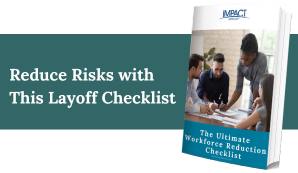In the US, nearly 625,000 new small businesses open each year.* The Bureau of Labor Statistics reports that 10.1% of Americans are self-employed.** As you explore how to become a business owner, you’ll discover that it requires more research, investigation, and prep work than you may originally anticipate. To ensure your business idea turns into a success, your first step is to make sure you spend a thorough amount of time deciding what type of business you’d like to run.
According to IMPACT Group’s expert Entrepreneur Coach Jim Wojtak, the most common mistake aspiring entrepreneurs make is not picking the right business. With expert guidance and resources, you can properly vet your aspiration, develop a business plan, and determine your target market. Coaching can accelerate the process.
What Not to Do When Becoming a Business Owner
“Many folks are not aware of the steps in the business planning process or have not taken time to consider them,” shares Jim. He coaches individuals on becoming an entrepreneur, franchising a business, or transferring their current business to a new area. He guides individuals through the essentials of starting and operating a successful business.
Alleviate the Challenges of Becoming a Business Owner with a Structured Plan & Coaching
To coach aspiring entrepreneurs, Jim leverages resources available through the My Own Business Institute (MOBI). Developed by Santa Clara University, MOBI offers a structured program to help entrepreneurs launch new businesses by progressing through essential, practical steps. Paired with an expert entrepreneur coach, participants of the program are coached through key aspects of how to become a business owner, including:
- Deciding on a Business
- Developing a Business Plan
- Financing the Business
- Researching the Target Market
- Obtaining Licenses and Permits
- Securing Business Insurance
- Marketing the Business
Define the 3 M’s of Business Ownership
“I coach individuals with a wide variety of business and interests,” Jim shares. He’s currently working with individuals to start such business ventures as a vegan personal chef and catering, handyman services for seniors, cemetery headstone sales, home remodeling for individuals with medical issues, and competitive snowboarding product development. “With nearly all of these folks, our success has been in guiding them with state business registration, setting up a business plan, and determining marketing ideas to promote the services and products.” He also has the individuals think about and define what Jim calls the 3 M’s of becoming a business owner.
- Market: Who is your target market?
- Message: What is your unique value proposition?
- Medium or Channels: Which ones should you use to reach the target market?
10 Key Steps on How to Become a Business Owner
Starting a business can be an exciting yet challenging journey. It’s important to take clear, methodical steps to increase your chances of success. Here are 10 key steps on how to become a business owner:
1. Decide on the type of business you’d like to run: This is an important first step. Think about your talents and passions. This is the most common and most serious mistake made in business – not picking the right business to begin with. For example, if you don’t like or you’re not good at searching for talent and hiring, do you want to run a business that typically experiences high turnover and requires a large staff? If you don’t want to work weekends, do you really see yourself as a caterer or wedding photographer?
2. Start with a clear business plan: A business plan will serve as a roadmap for your company and help you identify your target market, competition, marketing strategy, and financial projections. Your plan should include what financial assets you need to get started and how you’ll make money.
3. Do thorough market research: Understand your target audience and analyze the competition. Learn about their needs, preferences, and pain points.
4. Focus on your unique value proposition: Identify what makes your business unique and focus on it. This will help differentiate your business from competitors.
5. Build a strong team: Surround yourself with talented individuals who share your vision and passion for the business. You can’t do everything alone. A team can include partners, paid employees, contractors, and volunteers.
6. Get your finances in order: Develop a financial plan, including projected income and expenses, to help you understand the financial health of your business. Know how much money will be required to get started and identify potential sources of additional funding.
7. Be flexible and open to change: Be prepared to pivot and adjust your business strategy based on market trends, customer feedback, and unexpected challenges.
8. Invest in marketing and advertising: Develop a comprehensive marketing plan and discover how your target audience shops for the type of services and products you will provide. Your marketing strategy may include social media, email campaigns, print advertising, digital advertising, among other options.
9. Stay up-to-date with industry trends: Keep up with industry trends, technologies, and best practices to stay ahead of the competition. Be curious. Find out what others are doing to solve the same issues you have in your business.
10. Never stop learning: Continuously educate yourself on business strategies, leadership, and other topics to help you become a better entrepreneur and leader. Sign up for free online classes and attend conferences.
Interested in working with a coach to help you launch your business?
Contact us today to learn more. Or visit our program options here.
Sources:
* 40 Stand-Out Small Business Statistics, Zippia.com
** How Many Americans are Self-Employed?, Luisazhou.com









